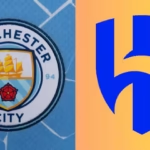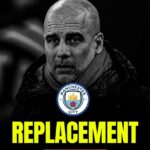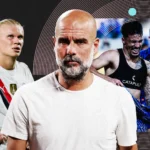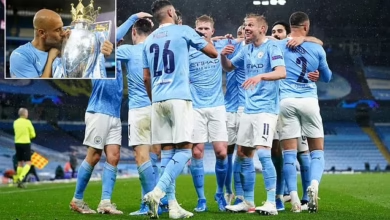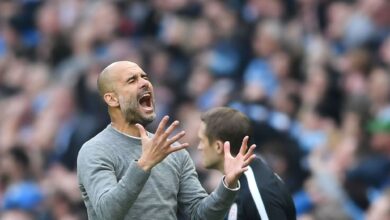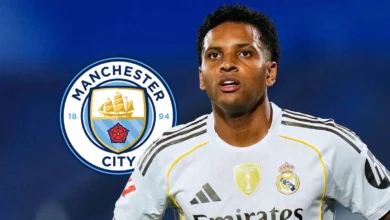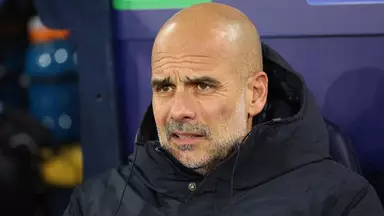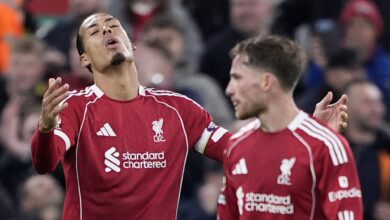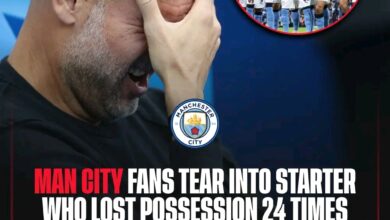Shock Premier League club enter race to sign Rodrygo but one thing has to happen first
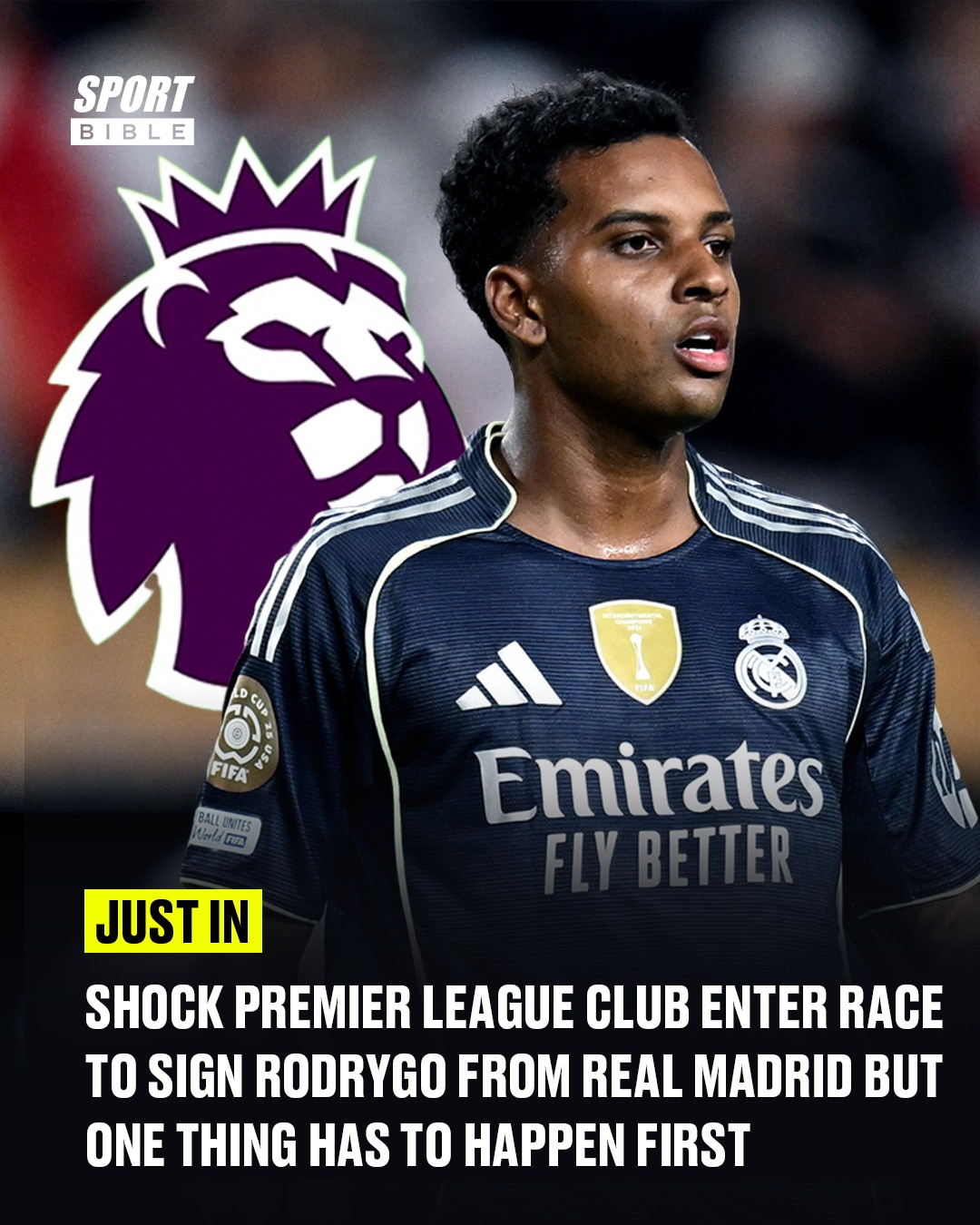
Rodrygo’s situation took a dramatic turn during Real Madrid’s participation in the FIFA Club World Cup, where the Brazilian found himself at the center of managerial decisions that would ultimately shape his future. Under the guidance of new manager Xabi Alonso, who had replaced Carlo Ancelotti following the Italian’s departure to take charge of the Brazilian national team, Rodrygo’s position within the squad hierarchy became increasingly precarious.
The talented winger started Madrid’s opening Club World Cup fixture against Saudi Arabian side Al Hilal, showcasing his technical ability and pace that had made him such a valuable asset to Los Blancos over the years. However, his performance failed to convince Alonso, who made the controversial decision to relegate the Brazilian to the bench for subsequent matches. This tactical shift sent ripples through the football world, with many interpreting it as a clear signal that Rodrygo’s days at the Bernabéu were numbered.
The situation deteriorated further when Real Madrid’s Club World Cup campaign came to an abrupt and humiliating end at the hands of Champions League winners Paris Saint-Germain. The French giants delivered a crushing 4-0 defeat that not only ended Madrid’s hopes of claiming the prestigious trophy but also exposed the tactical vulnerabilities that had been developing under Alonso’s stewardship. For Rodrygo, who managed just 92 minutes of game time throughout the entire tournament and provided only one assist, the writing was on the wall.
Arsenal’s Early Interest
The North London giants Arsenal were among the first to recognize the potential opportunity presented by Rodrygo’s uncertain situation at Real Madrid. Reports emerged last month suggesting that the Gunners had developed a “genuine interest” in the Brazilian forward, with the club’s hierarchy viewing him as the perfect addition to their attacking arsenal under Mikel Arteta’s tactical system.
According to reliable journalist Ben Jacobs, Arsenal’s interest in Rodrygo was far from superficial. The club had conducted exploratory talks dating back to May, demonstrating their long-term commitment to securing his services. These preliminary discussions revealed the scale of the potential transfer, with Real Madrid setting their asking price at approximately €90 million – a figure that reflects both Rodrygo’s undeniable talent and his contract situation at the Spanish club.
Arsenal’s pursuit of Rodrygo makes strategic sense when analyzed within the context of their recent transfer activity and long-term planning. The club has already made significant investments in their squad this summer, securing the services of Athletic Bilbao goalkeeper Kepa Arrizabalaga, Real Sociedad midfielder Martin Zubimendi, and Brentford’s Danish defensive midfielder Christian Norgaard. These additions have strengthened their foundation, and the addition of Rodrygo would provide the attacking flair and versatility that Arteta has been seeking to take his team to the next level.
The Brazilian’s ability to operate across the front line, whether as a traditional winger, an inverted forward, or even as a false nine, aligns perfectly with Arsenal’s fluid attacking philosophy. His pace, technical ability, and eye for goal would add another dimension to an attack that already features the likes of Gabriel Jesus, Eddie Nketiah, and the emerging talents from their academy system.
Liverpool’s Conditional Interest
While Arsenal’s interest appeared straightforward, Liverpool’s entry into the race for Rodrygo comes with significant complications and conditions that could ultimately determine the feasibility of any potential deal. According to reports from Spanish outlet Diario AS, the Merseyside giants have expressed genuine interest in the Brazilian, but their pursuit is intrinsically linked to the future of their own Colombian winger Luis Díaz.
The 28-year-old Díaz has become the subject of intense speculation throughout the summer transfer window, with European giants Bayern Munich and Barcelona both reportedly keen on securing his services. The former Porto star has been a key figure in Liverpool’s attacking setup since his arrival, but recent reports suggest that he may be open to a new challenge, particularly if it involves a move to one of Europe’s traditional powerhouses.
Liverpool’s interest in Rodrygo as a potential replacement for Díaz represents a fascinating tactical shift for the club. While both players operate primarily as wingers, their styles of play offer different tactical possibilities. Díaz’s directness and pace have been crucial to Liverpool’s counter-attacking approach, while Rodrygo’s technical ability and creativity could provide a more measured, possession-based alternative that would suit the evolution of Jürgen Klopp’s tactical philosophy.
The financial implications of this potential swap are equally intriguing. Reports suggest that Liverpool would demand approximately €75 million for Díaz, should they decide to sell, while Real Madrid’s valuation of Rodrygo sits at around €90 million. This €15 million difference could prove to be a stumbling block, particularly given Liverpool’s traditionally cautious approach to big-money transfers.
Liverpool’s summer transfer activity has already been impressive, with the club securing the services of Bayer Leverkusen full-back Jeremie Frimpong, the highly-rated German attacking midfielder Florian Wirtz, and Hungarian left-back Milos Kerkez. These acquisitions have addressed key areas of concern and provided additional depth to their squad. The addition of Rodrygo would represent the cherry on top of an already impressive transfer window.
The Xabi Alonso Factor
The appointment of Xabi Alonso as Real Madrid’s new manager has been one of the most significant factors in Rodrygo’s uncertain future. The former Liverpool and Real Madrid midfielder, who achieved legendary status during his playing career, has brought a new tactical philosophy to the Bernabéu that doesn’t necessarily accommodate all of the players who thrived under his predecessor.
Alonso’s decision to drop Rodrygo during the Club World Cup was seen by many as a definitive statement about the player’s future role in his plans. The Brazilian’s limited minutes during the tournament – just 92 minutes across all matches – spoke volumes about his standing within the new hierarchy. When Real Madrid suffered their humiliating 4-0 defeat to Paris Saint-Germain in the semi-finals, Rodrygo was an unused substitute, watching from the sidelines as his teammates endured one of the most embarrassing results in recent club history.
The tactical approach that Alonso has implemented appears to favor different types of players than those who excelled under Ancelotti. While Rodrygo’s pace and technical ability were perfectly suited to the Italian’s more direct approach, Alonso’s preference for players who can operate in tighter spaces and contribute more defensively has seemingly pushed the Brazilian down the pecking order.
This shift in tactical philosophy has coincided with other significant changes at Real Madrid. The departure of Croatian legend Luka Modrić, who is reportedly set to join AC Milan, signals the end of an era at the club. For Rodrygo, who had developed a strong understanding with the veteran midfielder, this represents yet another factor pushing him toward the exit door.
The Financial Dynamics
The financial aspects of Rodrygo’s potential transfer present both opportunities and challenges for all parties involved. Real Madrid’s €90 million valuation reflects their understanding of the current market conditions and the premium attached to players of Rodrygo’s caliber and age. At 24, the Brazilian represents a player entering his prime years, with the potential for significant resale value in the future.
For Arsenal, the financial commitment required to secure Rodrygo’s services would represent one of their most significant investments in recent years. However, the club’s improved financial position, bolstered by their return to Champions League football and increased commercial revenues, provides them with the capability to compete for elite-level talent. The potential arrival of Rodrygo would send a clear message about Arsenal’s ambitions and their commitment to challenging for major honors.
Liverpool’s situation is more complex, given their conditional interest based on Díaz’s potential departure. The Merseyside club has historically been more cautious with their transfer spending, preferring to identify undervalued talent and develop it within their system. However, the potential for a like-for-like replacement of similar quality could justify the significant financial outlay required.
The financial implications extend beyond the initial transfer fee. Rodrygo’s wages, signing bonus, and agent fees would all contribute to the overall cost of any potential deal. Additionally, the player’s commercial value – particularly important for clubs looking to expand their global reach – adds another layer to the financial calculations.
Alternative Targets and Competition
The race for Rodrygo’s signature exists within a broader context of summer transfer activity, with multiple clubs pursuing various attacking targets. Arsenal’s interest in the Brazilian runs parallel to their reported pursuit of other forwards, including Sporting CP’s Viktor Gyökeres, Crystal Palace’s Eberechi Eze, and rumors linking them with a move for Chelsea’s Noni Madueke.
This diversified approach reflects the competitive nature of the current transfer market and the need for clubs to maintain multiple options to avoid being left empty-handed. The reported interest in Gyökeres, in particular, represents a different type of attacking threat – a more traditional center-forward who could provide the physical presence that Arsenal have sometimes lacked in their attacking play.
Liverpool’s alternative targets paint a similarly diverse picture. Reports suggest that the club continues to monitor Newcastle United’s Alexander Isak, Sporting CP’s Gyökeres, and Paris Saint-Germain’s Hugo Ekitike. This range of options demonstrates the club’s flexibility in their approach and their recognition that securing their preferred targets may require patience and strategic maneuvering.
The competition for elite attacking talent has intensified significantly in recent years, with clubs across Europe recognizing the importance of having multiple high-quality options in their forward lines. This trend has been driven by the increasing physical demands of modern football, the impact of injuries, and the tactical flexibility required to succeed across multiple competitions.
The Player’s Perspective
From Rodrygo’s perspective, the current situation presents both challenges and opportunities. The Brazilian’s career trajectory had been on a consistently upward path since his arrival at Real Madrid from Santos in 2019. His development from a promising youngster to a key contributor in major matches, including crucial goals in Champions League semi-finals and finals, had established him as one of the most exciting young talents in world football.
However, the arrival of Kylian Mbappé at Real Madrid last summer fundamentally altered the dynamics of the club’s attack. The French superstar’s presence, combined with the established positions of players like Vinícius Júnior and Jude Bellingham, created a more competitive environment for attacking positions. Rodrygo’s versatility, which had previously been seen as a major asset, may have become less valuable in a system that required more specialized roles.
The Brazilian’s limited starts in La Liga last season – just 22 league appearances under Ancelotti – provided early warning signs about his changing status within the squad. Despite managing six goals and five assists in the league, along with five goals and two assists in the Champions League, his overall contribution was overshadowed by the performances of his teammates.
For a player of Rodrygo’s age and ambition, the prospect of regular first-team football at a club like Arsenal or Liverpool would undoubtedly be attractive. Both clubs could offer him the central role in their attacking systems that he has been seeking, along with the opportunity to compete for major honors in both domestic and European competitions.
The Broader Market Context
Rodrygo’s potential transfer occurs within a broader context of significant movement in the attacking player market. The summer of 2025 has already seen several high-profile moves, with clubs across Europe looking to refresh their attacking options and adapt to evolving tactical trends.
The influence of the Premier League’s financial power continues to be felt across European football, with English clubs able to compete for virtually any player they target. This financial advantage has created a competitive environment where clubs must move quickly and decisively to secure their preferred targets before rivals can intervene.
The tactical evolution of modern football has also influenced the types of players that clubs are seeking. The increasing emphasis on tactical flexibility, pressing, and positional interchangeability has placed a premium on players who can contribute across multiple positions and phases of play. Rodrygo’s ability to operate as a traditional winger, an inverted forward, or even as a false nine makes him an attractive proposition for coaches looking to implement complex tactical systems.
Conclusion
The race for Rodrygo’s signature represents one of the most intriguing storylines of the summer transfer window. The Brazilian’s situation at Real Madrid, combined with the interest from multiple Premier League giants, creates a complex web of negotiations, conditions, and strategic considerations that will ultimately determine his future.
For Arsenal, securing Rodrygo would represent a significant statement of intent and provide them with the attacking quality needed to compete at the highest level. For Liverpool, the Brazilian represents a potential solution to their attacking puzzle, albeit one that depends on the resolution of Luis Díaz’s future.
The coming weeks will be crucial in determining whether either club can meet Real Madrid’s valuation and convince the player to make the move to England. With Xabi Alonso’s apparent decision to move forward without Rodrygo, the Brazilian’s departure from the Bernabéu appears increasingly likely. The only question remaining is which Premier League giant will ultimately win the race for his signature.
As the transfer window progresses, the Rodrygo saga will continue to captivate football fans and provide insight into the complex dynamics of modern football transfers. The outcome will not only shape the attacking options of the clubs involved but could also influence the broader transfer market as other deals potentially depend on the resolution of this particular situation.
